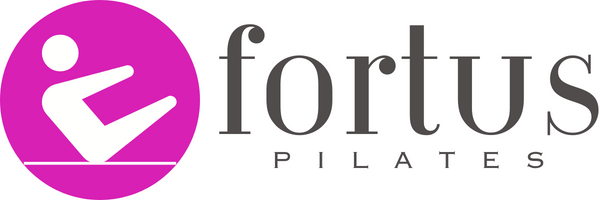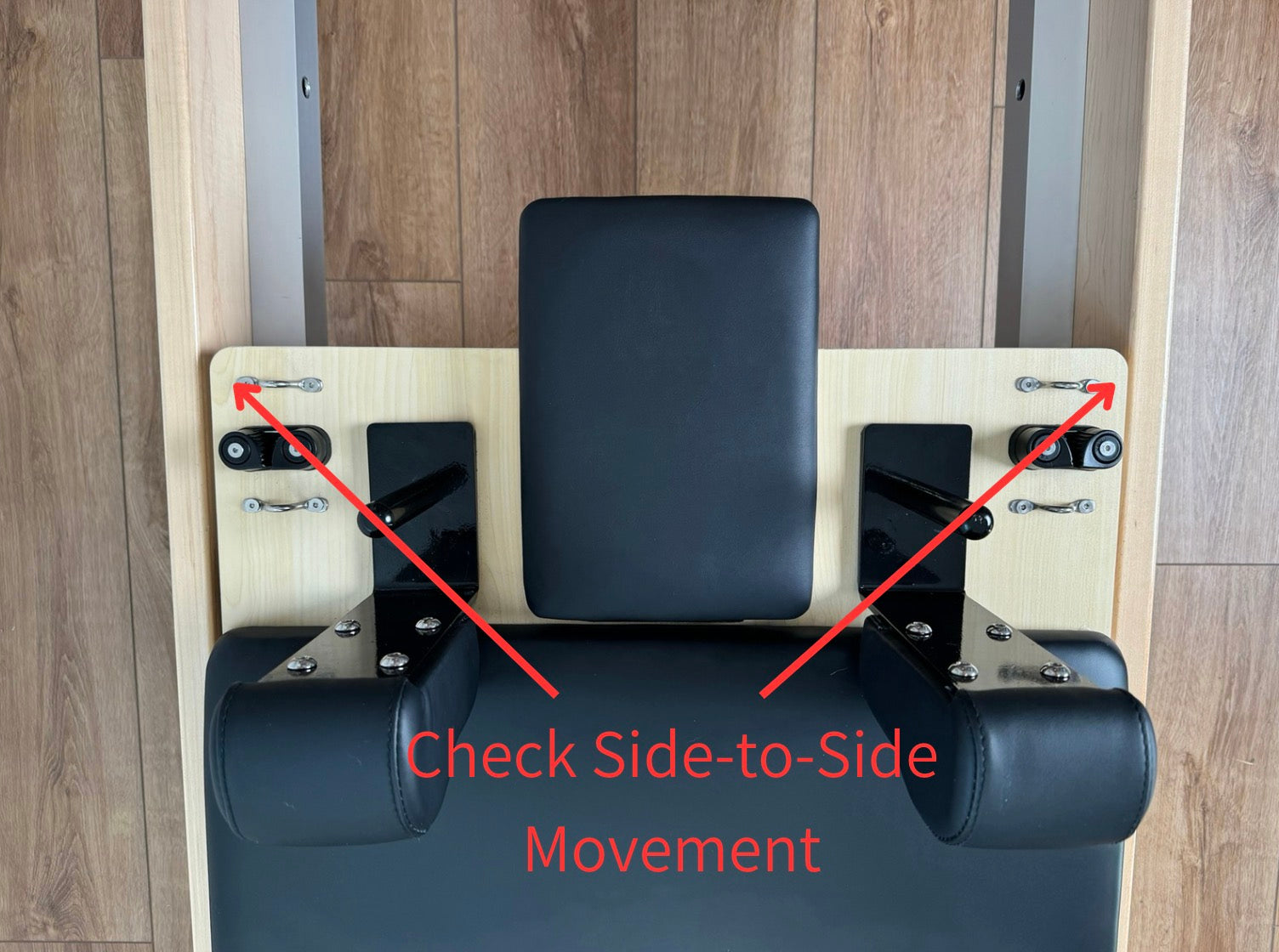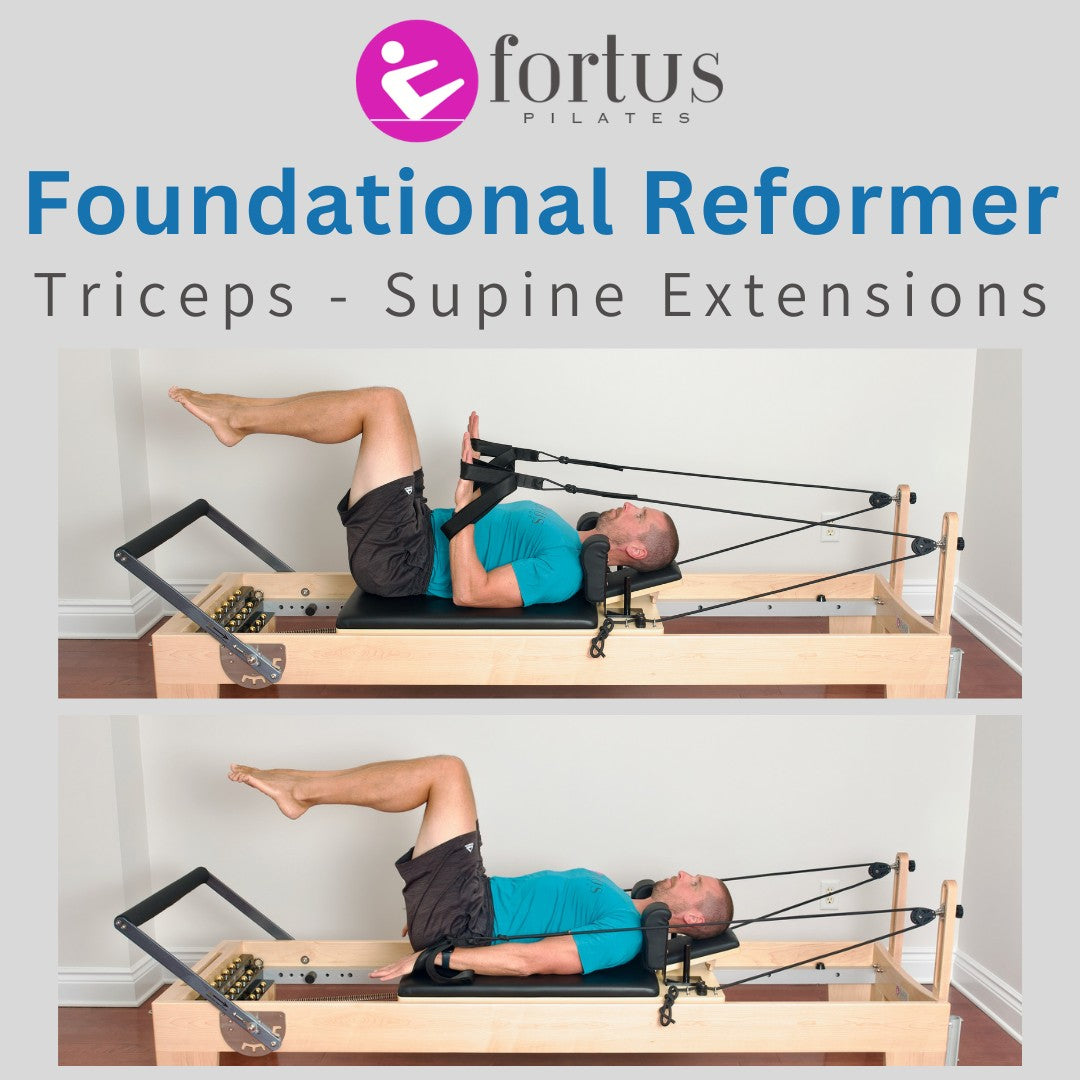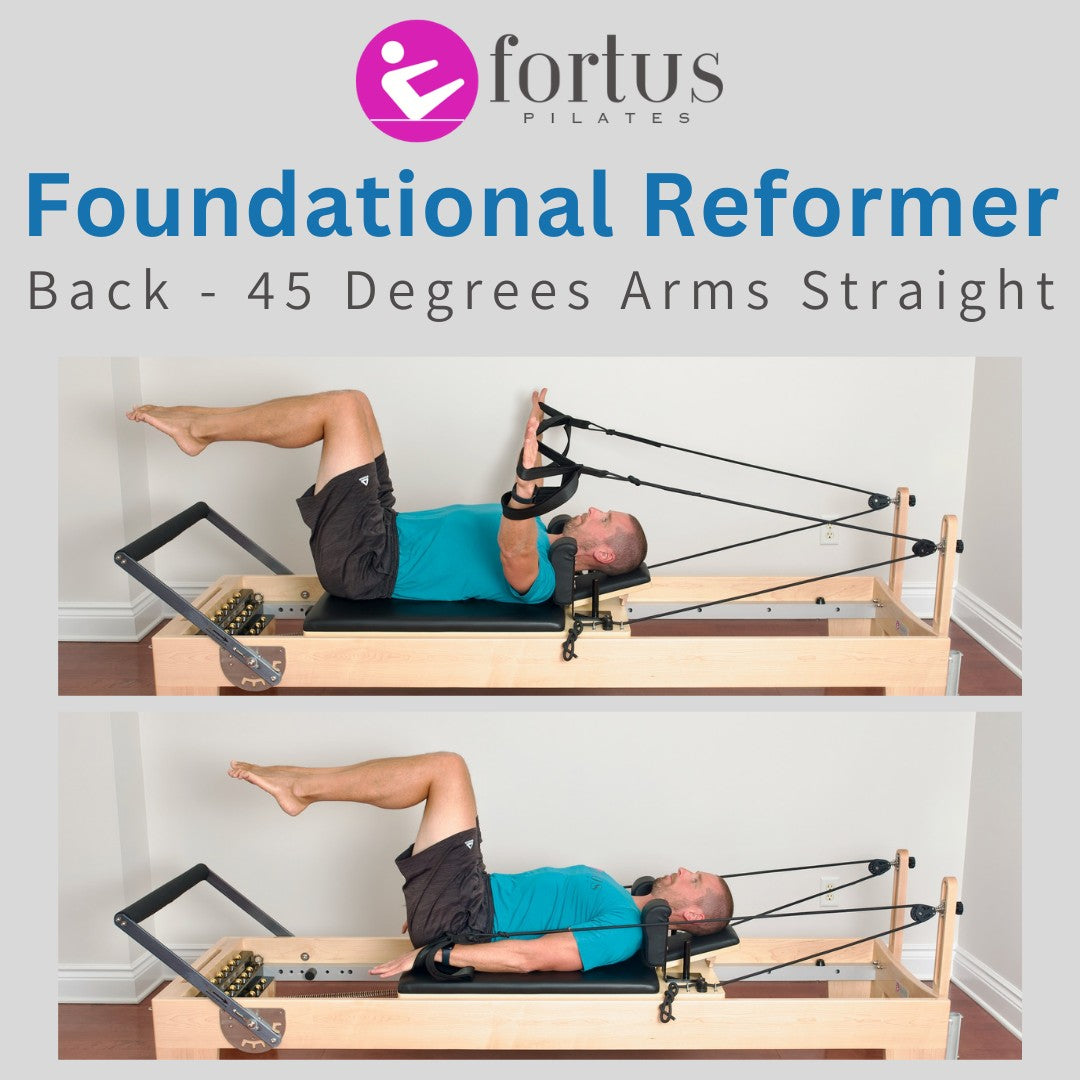
Summary
The Pilates Reformer Lower & Lift focuses on the calves, ankles, and feet. This exercise involves pressing the feet against the reformer bar and then stretching the toes and arches, targeting the tendons in the lower leg. It strengthens and elongates calf muscles, improves ankle flexibility, and enhances foot mobility. Beneficial for preventing foot and ankle injuries, this exercise is particularly advantageous for runners, dancers, and those seeking to improve overall lower extremity health and flexibility.
Purpose
- Stretch and increase flexibility of calf muscles (gastrocnemius, soleus, Archilles tendon).
- Strengthen ankle joint.
- Stretch entire backline of leg.
Reformer Setup
- Footbar elevated.
- Spring tension moderate to heavy.
- Carriage stoppers adjusted to allow knees to bend to 90 degrees.
- Headrest up for comfort and proper cervical alignment.
Starting Position
- Supine on the carriage, tailbone centered, hands flat on carriage.
- Balls of feet on footbar, feet together, heels together or slightly apart depending on preference.
- Ankles moderately extended (feet pointed in plantar flexion). Do not over-extend ankles to avoid transferring weight into toes. Keep weight on balls of feet.
- Knees bent at 90 degrees, knees and legs pressing together in adduction.
- Pelvis and lumbar spine in neutral position.
- On exhale, extend legs until legs are straight, knees together. Avoid locking out knees completely. Ankles remain extended (plantar flexion).

Starting position.

Foot positioning.
Execution (10-12 Repetitions)
- On inhale, allow heels to slowly drop into dorsiflexion.
- On inhale, slowly extend ankles to return to starting position (plantar flexion).
- Maintain constant pace throughout entire movement.
- All movement comes from the ankle joint. Specifically, the knees, pelvis, and lumbar spine should remain fixed.
- Press knees and legs together throughout movement, maintaining adduction.
- Majority of weight is transferred to the footbar through the ball of the big and second toes.
- After 10-12 repetitions bend knees to return carriage to starting position.

Position 1. Start.

Position 2. Press out.

Position 3. Lower. 10-12 repetitions moving between positions 3 and 4.

Position 4. Lift.

Position 5. Return.
Common Mistakes
- Performing the exercise too quickly. Aim for a slow 1-2-3 count as the heels drop, and an equivalent slow 1-2-3 count as the heels press back into extension.
- Anterior or posterior pelvic rotation. Maintain pelvis in fixed neutral position.
- Lumbar spine arch changing. Keep lumbar spin in fixed neutral position.
Modifications & Variations
- Return the carriage to the starting position between each repetition. This effectively combines the high half toes exercise with the lower and left exercise.
- Perform with feet in the small V position.
- Perform with feet shoulder distance apart.




